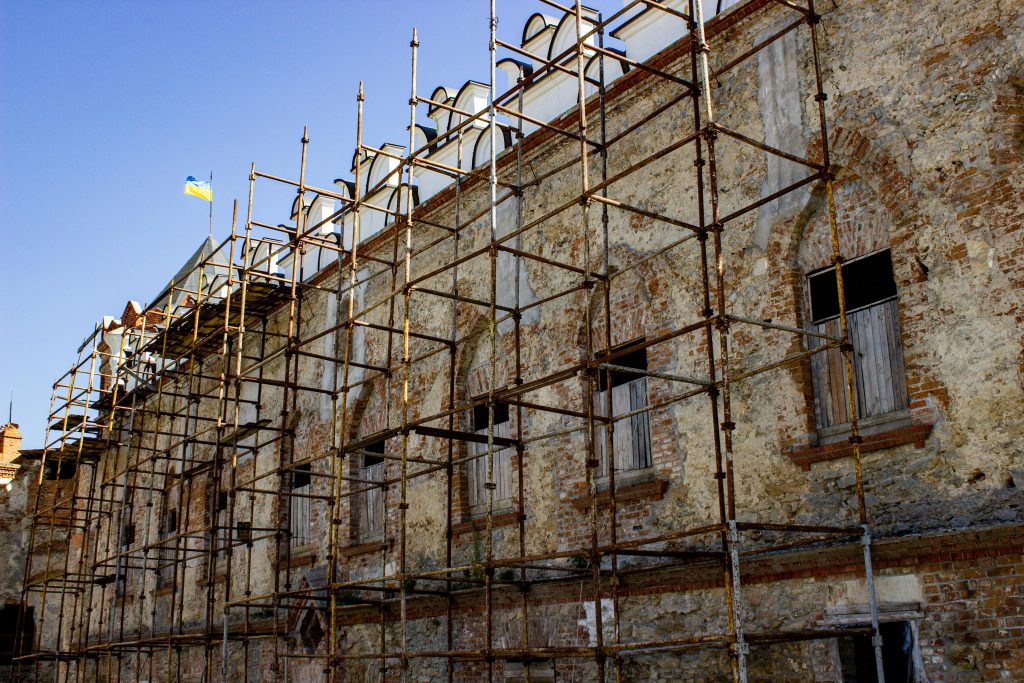Introduction
Every organization, from manufacturing plants to IT service providers, knows one thing for certain: maintenance is unavoidable. Equipment wears out, facilities age, and software needs updates. Yet the way maintenance is planned, prioritized, and budgeted often determines whether a company saves money—or hemorrhages it on reactive fixes.
Maintenance budgeting isn’t just about setting aside money for repairs. It’s about forecasting costs, balancing preventive vs. corrective measures, aligning with business strategy, and ensuring compliance. In this article, we’ll explore the mechanics of maintenance budgeting—how it’s handled, who’s responsible, and what best practices organizations are adopting in 2025 to get it right.
1. Understanding Maintenance Budgeting
1.1 What Is Maintenance Budgeting?
Maintenance budgeting is the process of planning, estimating, and allocating funds to keep assets, equipment, and infrastructure in working order. It covers:

- Routine and preventive maintenance (scheduled inspections, cleaning, lubrication).
- Corrective maintenance (repairs after a breakdown).
- Predictive maintenance (AI/IoT-driven monitoring and early interventions).
- Capital replacement planning (setting aside funds for end-of-life equipment).
1.2 Why It Matters
Without structured maintenance budgeting:
- Organizations face unexpected downtime and costly emergency repairs.
- Facilities and equipment deteriorate faster, reducing their lifespan.
- Regulatory non-compliance can lead to fines and reputational damage.
- Cash flow becomes unpredictable, hurting financial stability.
In short, budgeting transforms maintenance from a reactive cost center into a strategic business enabler.
2. Types of Maintenance Costs
Understanding categories of costs is the first step toward effective budgeting.
2.1 Direct Costs
- Spare parts and consumables.
- Labor costs (in-house technicians, contractors).
- Tools, lubricants, and equipment needed for maintenance.
2.2 Indirect Costs
- Downtime and lost productivity.
- Safety incidents and liability risks.
- Training for staff to handle new machinery or systems.
2.3 Capital Costs
- Replacement of major equipment nearing end-of-life.
- Facility renovations.
- System upgrades (e.g., HVAC modernization, IT infrastructure refresh).
2.4 Hidden Costs
- Emergency repair premiums.
- Overtime pay during urgent breakdowns.
- Wasted resources when preventive tasks are skipped.
By capturing all four categories, organizations avoid underestimating real maintenance needs.
3. The Budgeting Process Step by Step
3.1 Asset Inventory and Assessment
The process begins with a comprehensive asset inventory:
- Listing all equipment, facilities, and systems.
- Recording age, condition, and usage patterns.
- Assigning criticality ratings (mission-critical vs. non-essential).
3.2 Historical Data Analysis
Maintenance teams review:
- Past breakdowns and associated costs.
- Preventive maintenance schedules and outcomes.
- Seasonal variations (e.g., HVAC costs peaking in summer).
3.3 Estimation and Forecasting
- Predictive analytics tools estimate when equipment is likely to fail.
- AI-driven models recommend optimal preventive schedules.
- Finance teams project future inflationary impacts on parts and labor.
3.4 Prioritization
Not all maintenance is equal. Budgets are aligned with:
- Safety-critical assets (e.g., medical equipment, elevators).
- Regulatory requirements (e.g., fire safety inspections).
- Revenue-generating assets (e.g., production machinery).
3.5 Allocation of Funds
Funds are distributed into:
- Operational budget (routine + preventive tasks).
- Contingency fund (unexpected breakdowns).
- Capital reserve (asset replacements).
3.6 Continuous Monitoring
Budgeting is not static. Maintenance managers:
- Track variances between planned vs. actual expenses.
- Adjust forecasts based on real-time performance.
- Report to leadership for transparency.
4. Who Handles Maintenance Budgeting?

4.1 Maintenance Department
- Provides technical input on asset conditions.
- Prepares cost estimates and schedules.
- Implements approved budgets.
4.2 Finance Department
- Ensures budgets align with company cash flow and financial goals.
- Sets overall spending limits.
- Tracks expenditures against forecasts.
4.3 Operations and Facility Managers
- Prioritize work orders based on operational impact.
- Balance short-term productivity vs. long-term maintenance.
4.4 Executive Leadership
- Approves budgets.
- Aligns maintenance strategy with business goals (e.g., sustainability, expansion).
Key insight: Maintenance budgeting is not one department’s job. It requires cross-functional collaboration.
5. Budgeting Approaches in 2025
5.1 Traditional Budgeting
- Fixed annual budgets, based on historical spending.
- Simple but inflexible—doesn’t adapt to sudden changes.
5.2 Zero-Based Budgeting (ZBB)
- Every line item must be justified from scratch each year.
- Prevents “carryover inefficiencies” but time-intensive.
5.3 Risk-Based Budgeting
- Funds allocated based on asset risk profiles.
- High-risk, high-impact equipment gets priority.
5.4 Predictive and Dynamic Budgeting
- AI and IoT sensors predict failures before they occur.
- Budgets adjust dynamically based on real-time data.
- Example: If vibration data from a pump indicates early wear, funds are reallocated from “general repairs” to “pump replacement.”
5.5 Hybrid Models
Most organizations blend approaches—combining preventive allocations with predictive adjustments and contingency funds.
6. Challenges in Maintenance Budgeting
6.1 Unpredictable Failures
Even with predictive tools, surprise breakdowns happen, forcing reallocations.
6.2 Data Quality Issues
Poor asset records lead to inaccurate forecasts and underfunding.
6.3 Balancing Short-Term Savings vs. Long-Term ROI
Cutting preventive maintenance saves money now but causes higher costs later.
6.4 Coordination Across Departments
Finance wants tight controls; operations want maximum uptime; maintenance wants more resources. Aligning these goals is complex.
6.5 Inflation and Supply Chain Volatility
Spare part prices and contractor rates fluctuate, making estimates tricky.
7. Tools and Technologies for Smarter Budgeting
7.1 CMMS (Computerized Maintenance Management Systems)
- Track work orders and asset histories.
- Generate cost reports.
- Integrate with ERP for financial planning.
7.2 EAM (Enterprise Asset Management) Systems
- Advanced systems used by large organizations.
- Align maintenance with lifecycle management and capital planning.
7.3 Predictive Maintenance Tools
- IoT sensors monitor temperature, vibration, or pressure.
- AI analyzes data to predict failures.
- Budgets shift proactively, reducing emergencies.
7.4 Analytics and Reporting Platforms
- Dashboards for real-time visibility.
- Variance analysis between planned and actual spend.
- Scenario modeling (e.g., “What if machine X fails this quarter?”).
8. Best Practices for Effective Maintenance Budgeting
8.1 Involve Multiple Stakeholders
Maintenance managers, finance, and operations should all contribute.
8.2 Use Data-Driven Forecasting
Leverage historical data + predictive analytics for accuracy.
8.3 Build Contingency Buffers
Allocate at least 10–15% of the budget for unexpected failures.
8.4 Align with Strategic Goals
E.g., if sustainability is a corporate priority, allocate funds to energy-efficient retrofits.
8.5 Review and Adjust Frequently
Quarterly reviews keep budgets aligned with reality.
8.6 Measure ROI of Maintenance Activities
Track metrics like:
- Cost per unit of production.
- Mean Time Between Failures (MTBF).
- Downtime reduction.
9. Industry-Specific Case Studies
9.1 Manufacturing: Predictive Maintenance in Action
A large automotive manufacturer faced high unplanned downtime due to aging assembly-line machinery. By implementing IoT sensors and predictive analytics:

- AI forecasted bearing failures weeks in advance.
- The budgeting process shifted funds from “emergency repairs” into “scheduled replacements.”
- Downtime costs dropped by 30%, and parts were purchased at negotiated rates instead of rush-order premiums.
Lesson: Predictive maintenance transforms budgeting from reactive firefighting into proactive cost management.
9.2 Facilities Management: Office Buildings and Utilities
A real estate company managing office complexes struggled with fluctuating HVAC repair costs. They adopted a risk-based budgeting approach:
- Critical systems (HVAC, elevators, fire safety) received top priority.
- AI-generated maintenance schedules predicted peak strain months.
- Budgets factored in seasonal spikes, spreading costs more evenly across the year.
Outcome: Consistent tenant satisfaction and more predictable annual expenses.
9.3 Healthcare: Compliance-Driven Maintenance
Hospitals can’t afford equipment failures, especially with life-critical devices. One healthcare provider:
- Integrated their CMMS with compliance requirements.
- Created budgeting templates for regulatory inspections (MRI machines, surgical lights).
- Added a compliance buffer fund to cover unexpected audit findings.
Result: Zero compliance-related fines for three consecutive years, despite tight budgets.
9.4 IT & Data Centers: Balancing Uptime and Cost
A cloud services provider’s biggest challenge was server downtime. Their budgeting strategy included:
- Predictive cooling system monitoring.
- Allocation for regular patching cycles.
- Capital replacement planning for end-of-life servers.
Impact: SLA violations decreased by 40%, improving client trust and avoiding penalties.
10. Emerging Trends in Maintenance Budgeting
10.1 AI-Driven Dynamic Budgeting
By 2025, companies increasingly rely on AI tools that:
- Adjust maintenance budgets in real time.
- Reallocate resources when anomalies are detected.
- Provide CFOs with scenario-based forecasts (“What if two turbines fail this quarter?”).
10.2 Integration of Maintenance with ESG Goals
Sustainability is no longer optional. Budgets are being shaped by:
- Energy-efficient retrofits (LEDs, HVAC optimization).
- Green maintenance practices (biodegradable lubricants, recyclable spare parts).
- Lifecycle costing (considering environmental impact alongside financial cost).
10.3 Subscription-Based Maintenance Models
Vendors now offer “Maintenance-as-a-Service” (MaaS):
- Companies pay predictable monthly fees.
- Vendors handle preventive, corrective, and predictive maintenance.
- Budgets shift from CapEx (capital expense) to OpEx (operating expense).
10.4 Cross-Department Budget Alignment
Maintenance budgets are increasingly tied to:
- Production goals (higher uptime = higher revenue).
- Finance KPIs (cost per unit produced).
- Customer satisfaction (facility reliability directly impacts client retention).
10.5 Cloud-Based Budgeting and CMMS
Maintenance teams now collaborate with finance in real time:
- Shared dashboards track spending against forecasts.
- Remote teams update budget allocations instantly.
- CFOs gain transparency into how maintenance impacts profitability.
11. Sustainability and Maintenance Budgeting
11.1 Green Maintenance Practices
Budgeting now includes funds for sustainable initiatives:
- Solar-powered equipment.
- Eco-friendly spare parts.
- Waste reduction through better asset lifecycle planning.
11.2 ROI Beyond Finances
Companies now measure maintenance ROI in triple bottom line terms:
- People: Safety and employee well-being.
- Planet: Reduced carbon emissions.
- Profit: Lower costs, fewer breakdowns.
11.3 Case Example: Logistics Company
A logistics provider invested in electric forklifts and AI-monitored charging stations.
- Initial maintenance budget rose by 15%.
- Long-term savings on fuel and emissions penalties offset costs within 3 years.
12. Future Predictions
12.1 Maintenance Will Be Seen as an Investment, Not a Cost
By 2030, companies will treat maintenance as a strategic investment that preserves asset value and supports growth.
12.2 Universal Predictive Maintenance
With IoT costs dropping, predictive maintenance will become the default, not the exception. Budgets will dynamically adjust via AI tools without human intervention.
12.3 Greater Role of Finance Teams
Maintenance and finance teams will collaborate more closely, with CFOs demanding data-backed justifications for every dollar spent.
12.4 Autonomous Maintenance Systems
Robotics and AI will perform routine tasks autonomously, shifting budgets from human labor toward tech investments.
13. Actionable Takeaways for Organizations
- Adopt predictive tools early: The ROI outweighs the upfront investment.
- Build flexible budgets: Account for contingencies and inflation.
- Involve all stakeholders: Maintenance, operations, finance, and leadership.
- Tie maintenance to business KPIs: Align budgets with safety, uptime, and revenue.
- Invest in sustainability: Future-proof against regulations and consumer expectations.

Conclusion
Maintenance budgeting isn’t just an accounting exercise—it’s a strategic discipline that balances cost control with operational resilience. Organizations that budget effectively ensure not only smoother operations but also stronger compliance, happier customers, and longer asset lifespans.
As industries embrace AI-driven predictive tools, ESG-driven practices, and cross-department collaboration, maintenance budgeting in 2025 has moved beyond spreadsheets. It is now a real-time, data-driven process that supports long-term competitiveness.
Whether you’re managing a factory floor, a hospital, a data center, or an office building, the principle remains the same: plan ahead, invest wisely, and view maintenance as an enabler, not an expense.
FAQs
1. What percentage of operating budgets typically goes to maintenance?
On average, 10–25% of an organization’s operating budget may be allocated to maintenance, depending on industry and asset intensity.
2. What is the role of AI in maintenance budgeting?
AI improves forecasting accuracy, enables predictive maintenance, and helps dynamically reallocate funds as asset conditions change.
3. How can organizations prevent overspending on maintenance?
Use predictive analytics, adopt preventive maintenance schedules, and include contingency buffers to avoid costly emergencies.
4. What industries spend the most on maintenance?
Manufacturing, energy, transportation, and healthcare often have the highest maintenance budgets due to mission-critical assets.
5. How often should maintenance budgets be reviewed?
At least quarterly, with real-time monitoring recommended for asset-heavy industries.
6. What’s the difference between CapEx and OpEx in maintenance budgeting?
CapEx covers large, long-term asset replacements, while OpEx covers routine and preventive tasks. Many companies now prefer OpEx models like “Maintenance-as-a-Service.”

